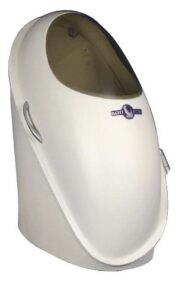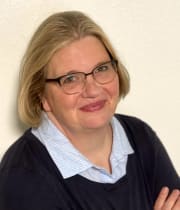‘Accidental bodybuilder’ uses BOD POD to track progress

Corey McColm says he’s an accidental bodybuilder. He just wanted to make a change.
“I got sick of looking in the mirror and seeing the unhealthy and the weak in myself,” he says.
So, McColm started going to the gym and working with a coach once a week.
“It was originally to look good,” he admits.
But as McColm built muscle and definition, he also built self-confidence. In April, the Spanaway man competed in his first bodybuilding show. He says he didn’t place particularly well, but that wasn’t the goal.
“Your first show, you’re just going to show you can do it for yourself,” he says.
Now he’s hooked. And he’s made an astonishing transformation.
McColm started out as “this skinny little chunky dude,” he says. That might seem like an oxymoron, but for the 36-year-old, the issue was less about his weight and more about his body composition. In other words, the pounds were heavily tilted toward fat rather than muscle. So, he hit the gym and started focusing on eating to build muscle.
“Six months or so in I started noticing a lot of physical changes that you don’t see on a scale,” he says.
What the scale misses, however, the BOD POD at MultiCare’s Sports Nutrition Services measures with astonishing accuracy. McColm says he’s swapped out 186 pounds of fat for lean muscle.

Board-certified Sports and Wellness Dietitian Lisa Lovejoy, MEd, RD, says the BOD POD works not just for people like McColm, who are working to make changes for athletic performance, but also for folks just looking to be more fit.
“If you lose a pound of fat and gain a pound of muscle, it can be really frustrating because the number on the scale doesn’t change,” she says.
The BOD POD uses air displacement to calculate body density and determine what percentage of your weight is fat versus lean tissue.
Unlike hydrostatic weighing, you won’t need to be completely submerged in water or worry about expelling as much air as possible. And unlike a DEXA scan, which is the other highly accurate way to measure body composition, the BOD POD doesn’t expose you to any radiation.
The BOD POD is used by the NFL and the U.S. military, but high-performance athletes aren’t the only ones who can benefit.
“A lot of fad diets are overly restrictive, and they actually lead to lean tissue loss,” Lovejoy says. “It’s eye-opening. It’s great to see the number on the scale go down but not if you gave up lean tissue in order for that to happen.”
A typical session starts with changing into a swimsuit, compression shorts or fitted underwear, plus a swim cap to cover your hair. You hop into the Bod Pod for two scans, which take about 50 seconds each. Then you get dressed and can immediately go over your results.
Lovejoy recommends getting a baseline scan before starting any weight loss or fitness program so you can accurately measure your progress. You don’t need a referral, but she cautions that insurance doesn’t typically cover the service.
Along with the BOD POD, Lovejoy offers nutritional counseling and resting metabolic rate testing. Prices for individual services and packages are available at Sports Nutrition Services. It’s simple to make an appointment, and you can usually get in within a couple weeks of calling.
McColm says making a serious change to your body or health is a personal decision.
“What it comes down to is, you really just have to find your why,” he says. “Otherwise you’re just going to sit there and watch Netflix all day.”
McColm found his “why” in his father.
“My old man, I watched him be a prisoner in his body after a stroke,” he says.
That’s not the future McColm wants for himself.
“I want to be able to throw a football to my grandson,” he says.
Even if you don’t want to start entering bodybuilding competitions, the information gained from the BOD POD is well worth the investment if you want to prioritize your health, McColm says.
“If you’re thinking about it, just do it,” he adds. “See where you’re at so you know where to start.”




